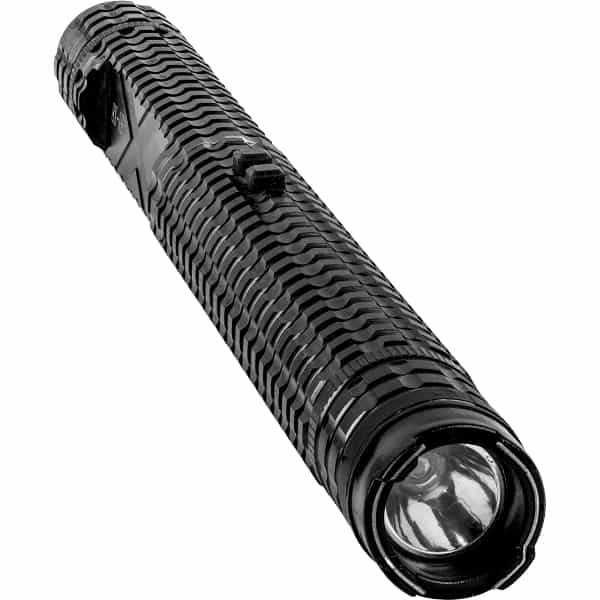

You’ve probably heard about stun guns as a safer option for self-defense, but have you thought about if there are hidden risks they pose? Stun guns are known for their ability to deliver a painful shock to incapacitate a target, but what sets them apart from other self-defense weapons is their non-lethal nature.
Despite the intense discomfort they cause, stun guns are designed to temporarily immobilize without causing any permanent damage. This unique combination of effectiveness and safety makes stun guns popular for individuals seeking reliable protection without the risk of long-term harm.
This information helps you make well-informed choices and enables meaningful discussions about the responsible use of such tools.

Stun guns deliver a high-voltage shock to incapacitate an individual temporarily. While stun guns are generally seen as non-lethal weapons, they can still harm and cause pain to the user.
Improper or excessive use of stun guns can lead to lasting physical and psychological damage, such as nerve damage, muscle contractions, and psychological trauma.
To avoid causing harm, it’s important to use stun guns responsibly and only in self-defense situations.
Stun guns are designed as non-lethal self-defense weapons. When a stun gun strikes someone, it sends a powerful electrical shock that disrupts the person’s nervous system. This causes the person to temporarily lose control of their muscles, making it hard for them to move or be a threat. It’s kind of like getting a really strong static shock from shuffling your feet on the carpet and then touching something metal.
Unlike guns or knives that can be deadly, stun guns are meant to stop someone without causing serious harm. The effects of a stun gun usually wear off in a few minutes, and there’s usually no long-term damage. So, even though getting zapped by a stun gun can be painful, it’s generally seen as a safer option compared to other weapons.
From a legal perspective, using an electroshock weapon (stun gun) can have consequences. Some places have laws and rules about who can have or carry stun guns. Using a stun gun in a way that’s not for self-defense or on vulnerable people can lead to criminal charges.
Also, if you use a stun gun when lethal force isn’t necessary, you could face legal trouble and lawsuits. It’s crucial for people to understand the legal side of using a stun gun and to use it responsibly and within the law.
When stun guns are used in situations where mental health problems are worsened, the outcomes can be very serious. This can make medical treatment and legal accountability more complicated. The damage caused by a stun gun, whether physical or mental, can have long-term effects, so it’s important to know the risks involved both medically and legally.
When using a stun gun, proper training is crucial for handling and deploying it safely. Training is essential for mastering the correct handling techniques and effectively deploying the stun gun. By focusing on target locations, you can maximize the stun gun’s ability to temporarily disrupt muscle control without causing unnecessary harm.

Understanding the safety guidelines is not just about following rules; it’s about realizing the risks and learning how to reduce them. Your training will cover important aspects of stun gun use, such as its limitations and the significance of the duration of contact. This knowledge is vital for achieving effective results while minimizing the risk of causing irreversible harm to the target.
Additionally, your training will emphasize proper deployment techniques. Knowing where and how to apply the stun gun can significantly affect a defensive situation. It’s not just about pushing a button; it’s about making informed choices during critical moments. With thorough training, you’ll be prepared to use your stun gun responsibly and effectively, ensuring your safety and that of those around you.
Exploring alternatives to stun guns can help you choose the best self-defense tool for your needs. Stun guns require an arm’s reach to deliver an electric shock. They can immobilize an attacker once the prongs make contact with their person. Once contact is made, this allows stun guns to disrupt the neuromuscular system, leading to temporary incapacitation. Stun guns also rely on pain compliance through direct contact, which can be less effective due to varying pain tolerance, contact duration, and strike location.
Furthermore, while stun guns have their place in self-defense, they may not always provide the level of protection you might need in certain threatening situations. However, each option comes with its own set of limitations and safety considerations. Understanding these differences is vital for making informed decisions about your self-defense strategy, ensuring you meet your safety needs effectively.
Dispelling myths about stun guns is essential, as they’re often misunderstood to cause lasting harm. Let’s break down some common misconceptions and set the record straight with facts.
| Myth | Fact | Why It Matters |
|---|---|---|
| Stun guns cause irreversible harm | They’re designed for temporary muscle control disruption. | Understanding this promotes responsible use. |
| They lead to permanent disabilities | Only about 1% of injuries result in permanent damage. | It highlights the rarity of long-term harm. |
| Stun guns offer instant incapacitation | Their purpose is for self-defense, not instant incapacitation. | Knowing limitations prevents a false sense of security. |

When used responsibly, stun guns do not cause permanent damage. They briefly disrupt muscle control to give you a chance to escape danger. It’s crucial to realize their role in self-defense instead of seeing them as a tool for causing long-term harm.
Understanding their limits and the importance of responsible use can help you avoid a false sense of security and ensure they are used effectively, reducing the risk of lasting disabilities or irreversible harm.
Stun guns shock, causing short-lived suffering and muscle paralysis. You’ll feel intense pain, and repeated zaps could cause lasting harm. Rarely do they lead to death or permanent damage, affecting less than 1% of folks zapped. Stun guns also do not knock people out.
You might find yourself sporting burn injuries after a stun gun encounter. These marks are caused by the high voltage severity and can serve as evidence in legal skirmishes.
Pepper Spray Wholesale provides non-lethal self defense products and hidden cameras for you, your loved ones and your home. If you have any questions about the products, do not hesitate to Contact Us. Stay Safe!
Pepper Spray Wholesale
1867 Caravan Trail
Ste 105
Jacksonville, FL 32216
Call us toll free: (800) 859-5566